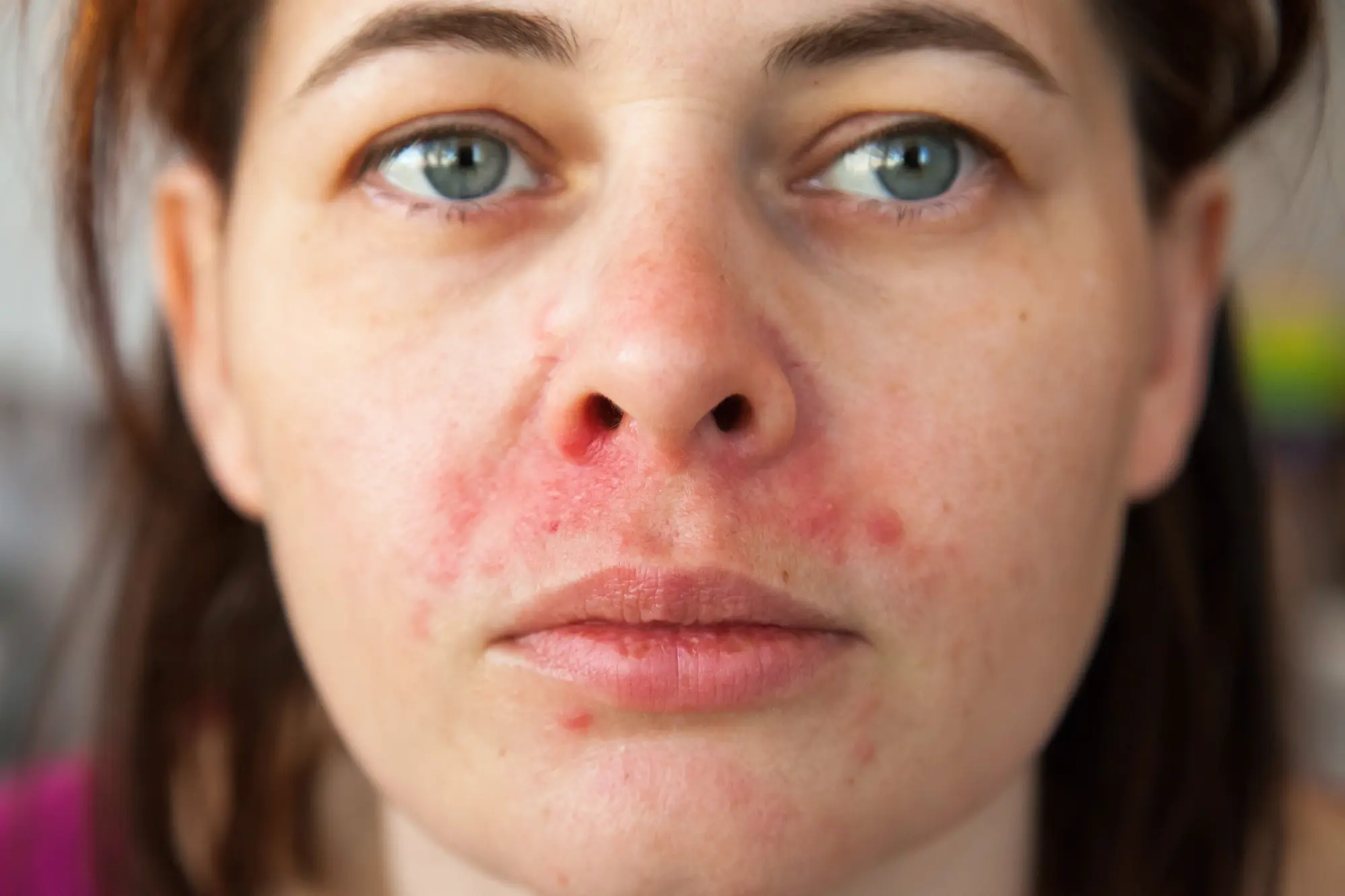
Perioral Dermatitis
- Home
- Perioral Dermatitis
Calm the Cycle. Restore Your Skin. Feel Confident Again.
You're not alone if you’re battling persistent redness, bumps, or peeling around your mouth, nose, or eyes. Perioral dermatitis can be stubborn, confusing, and incredibly frustrating.
At Biltmore Dermatology, our board-certified dermatology provider specializes in treating chronic skin conditions with over 23 years of dermatologic expertise and human understanding. We know this isn’t just about appearances—it’s about getting your skin (and confidence) back under control.
What Is Perioral Dermatitis?
Perioral dermatitis is a common inflammatory skin condition that shows up as:
- Redness, flaking, or dryness around the mouth, nose, and sometimes the eyes
- Small red bumps, pustules, or pimple-like irritation
- Itchiness, tightness, or a burning feeling
- Skin sensitivity that seems to react to almost everything
It’s often mistaken for acne, eczema, or allergic reactions—but it behaves differently. Without proper diagnosis and treatment, perioral dermatitis can linger for months or even years.
Common Triggers of Perioral Dermatitis
Many things can fuel or worsen perioral dermatitis, including:
- Overuse of topical steroids (even over-the-counter hydrocortisone creams)
- Heavy skin care products, especially moisturizers and cosmetics
- Fluoridated toothpaste
- Hormonal changes
- Stress, heat, or environmental triggers
Even products designed to “help” sensitive skin can sometimes make it worse.
Why Early Treatment Matters
If you’ve been cycling through creams, lotions, and DIY fixes with no success, it’s not your fault. Perioral dermatitis often needs medical treatment tailored to the underlying cause—not just symptom relief.
At Biltmore Dermatology, we:
- Identify true perioral dermatitis (and rule out mimicking conditions like acne or rosacea)
- Target treatment with gentle but effective prescription therapies
- Educate you on what to use, what to avoid, and how to break the flare cycle
- Support healing with realistic, achievable skin care adjustments
We treat skin with science—and we treat patients with humanity.
Treatment Options for Perioral Dermatitis
Your personalized plan may include:
- Prescription topical antibiotics or anti-inflammatories
- Short courses of oral antibiotics (for moderate to severe cases)
- Lifestyle and product adjustments to calm skin
- Long-term skin care guidance to prevent recurrences
Our goal is to not only clear your current flare—but to give you the tools to keep your skin healthy moving forward.
Compassion First: What to Expect at Your Visit
We know how exhausting it is to explain your skin struggles—especially when they’re visible and stubborn. At Biltmore Dermatology, you’re not just a chart number. You’re a real person dealing with something that deserves real answers and real compassion.
- We’ll listen.
- We’ll take your concerns seriously.
- And we’ll work with you to find a solution that fits your skin, your life, and your goals.
Schedule a Consultation
Ready to finally take control of your skin? You don’t have to figure it out alone.
Contact us to schedule your consultation at our Terre Haute or Vincennes office—or simply walk in today. At Biltmore Dermatology, we help you face the world with confidence again.
Frequently Asked Questions About Perioral Dermatitis
Looking for real answers about perioral dermatitis? Here’s what you need to know about symptoms, triggers, treatment timelines, and how to finally calm your skin for good.
Is perioral dermatitis contagious?
No, perioral dermatitis is not contagious. You can’t catch it from someone else, and you won’t spread it to family or friends. It’s an inflammatory skin condition—not an infection.
How is perioral dermatitis different from acne?
While it can look like acne (small red bumps or pimples), perioral dermatitis is a different type of skin inflammation. It usually forms around the mouth, nose, or eyes and often reacts badly to heavy creams, makeup, or steroid creams—things that might not bother acne-prone skin.
What triggers perioral dermatitis to flare up?
Common triggers include:
- Overusing topical steroids (even mild ones)
- Fluoridated toothpaste
- Heavy moisturizers or thick sunscreens
- Hormonal shifts
- Stress, heat, or strong winds
Identifying your triggers is key to managing perioral dermatitis long-term.
How long does perioral dermatitis treatment take?
Treatment timelines vary, but most patients see significant improvement within 4–8 weeks with the right medical plan. Clearing stubborn cases completely may take a few months, especially if skin barrier repair is needed.
The earlier we start, the faster you’ll feel relief.
Will it go away on its own?
Sometimes mild cases resolve if you stop using the wrong products (especially topical steroids). But often, medical treatment speeds healing and prevents it from dragging on for months or coming back worse later.
We’ll help you find the right path back to clear, healthy skin.
If you're tired of the cycle of irritation and flares, we’re here to help.
Contact us today to schedule your consultation with our board-certified dermatology provider in Terre Haute or Vincennes. Relief could be closer than you think.